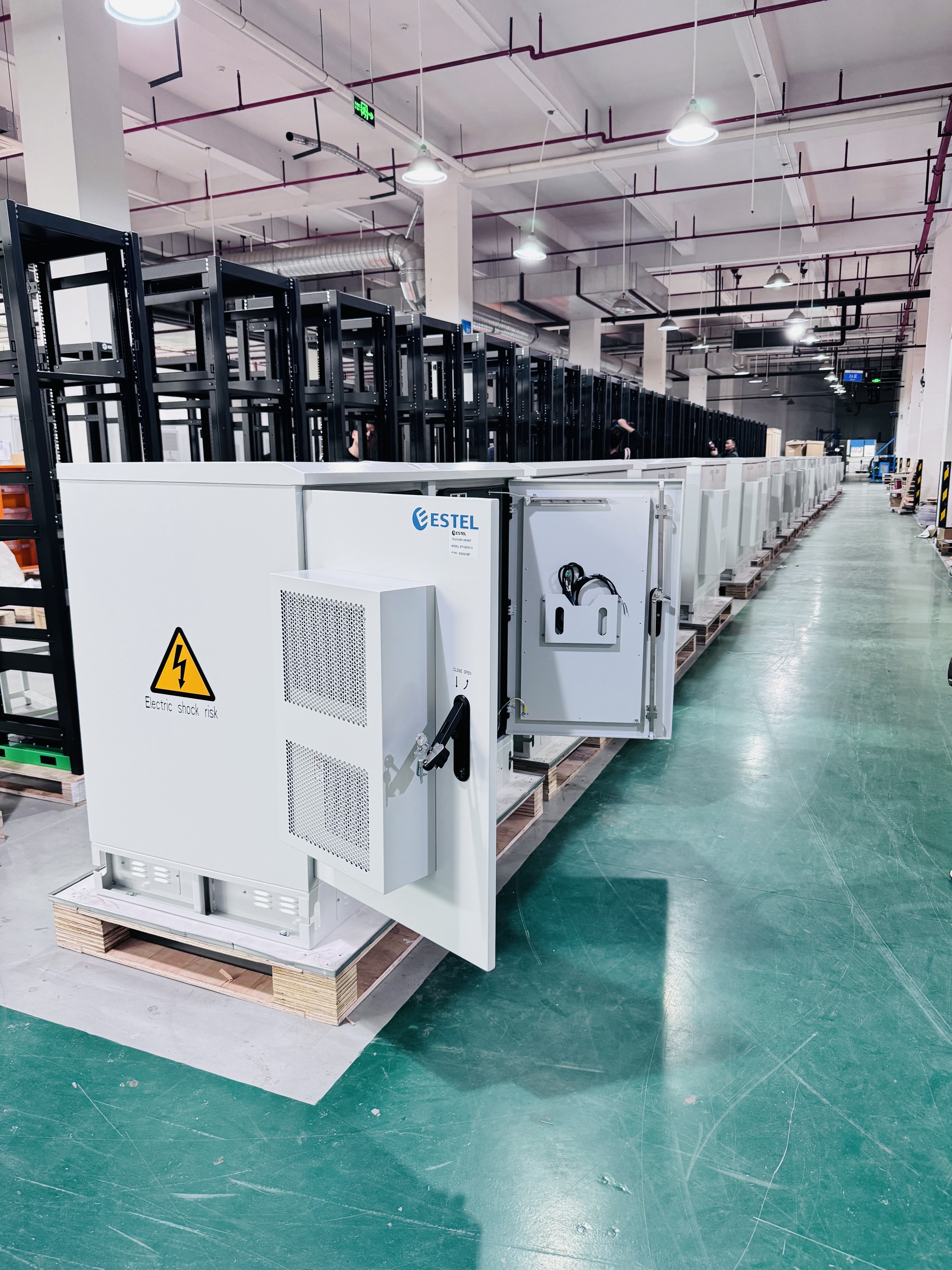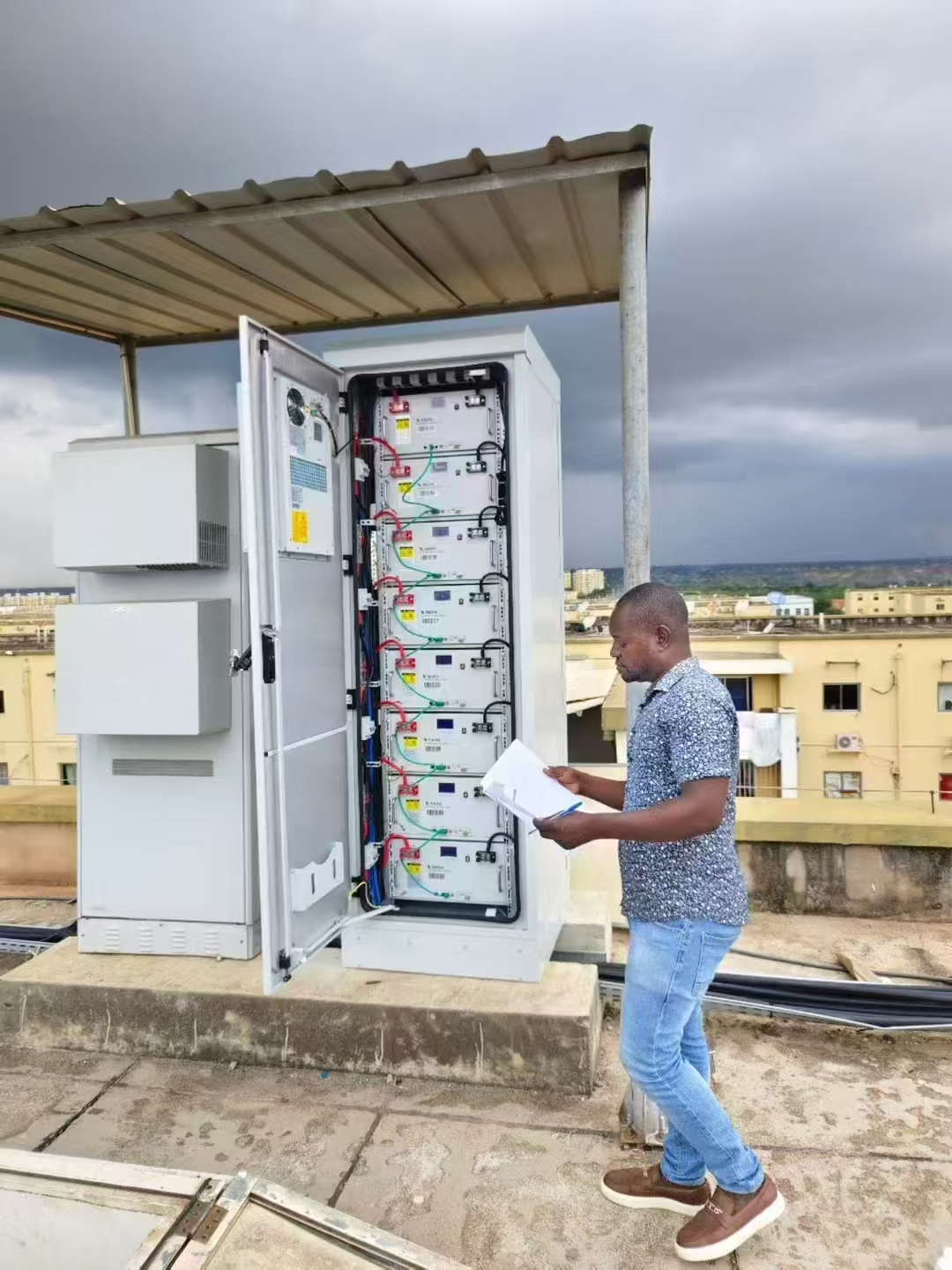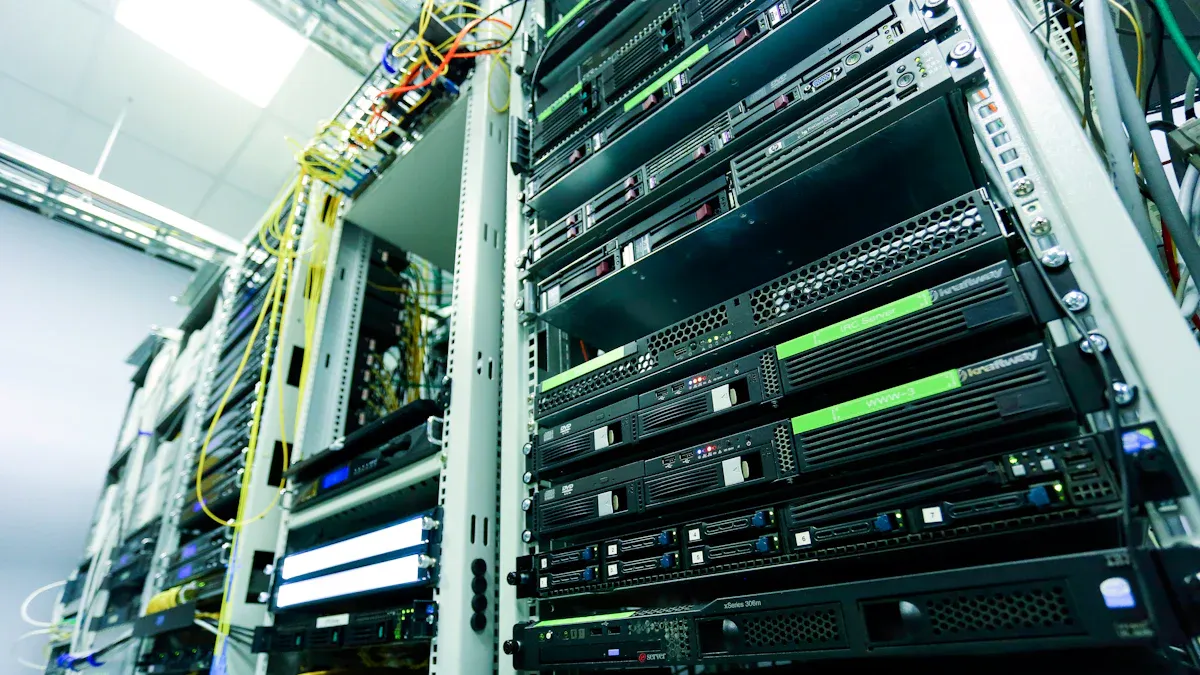How to Ensure Reliable Power Supply in Telecom Cabinets

A reliable power supply is the backbone of any telecom cabinet. It ensures uninterrupted operations, keeping communication networks stable and functional. Without it, even a brief power outage can disrupt services and lead to costly downtime.
You can rely on uninterruptible power supply (UPS) systems to bridge power gaps and protect sensitive equipment. These systems act as a safeguard, delivering consistent energy during outages or fluctuations. To maintain reliability, focus on designing robust power systems, conducting regular maintenance, and using monitoring tools to detect issues early.
Key Takeaways
A steady power supply is key for telecom to work nonstop. Use UPS systems to guard against power cuts.
Pick the right batteries for your telecom cabinet. Think about how long they last, care needs, and work in tough weather.
Add backup power to your system. Extra power sources lower the chance of downtime during outages or failures.
Do regular checks and maintenance. Look for damage, keep air flowing, and test backups often.
Use remote monitoring tools to track in real-time. These tools find problems early and make managing easier.
Essential Components of a Telecom Cabinet Power System

Uninterruptible Power Supply (UPS)
Key functions of UPS in telecom cabinets
A UPS plays a vital role in maintaining the reliability of your telecom cabinet. It provides backup power during outages, ensuring that critical equipment like routers and switches remain operational. Additionally, it protects sensitive devices from power surges and fluctuations, which can cause damage or data loss. By acting as a buffer, a UPS ensures that your telecom systems continue to function seamlessly, even during unexpected power interruptions.
Selecting the right UPS for telecom applications
Choosing the right UPS for your telecom cabinet depends on your specific needs. Look for a system with sufficient capacity to handle your equipment's power requirements. Consider features like battery runtime, scalability, and energy efficiency. For telecom applications, a UPS with advanced monitoring capabilities can help you track performance and detect potential issues early. This ensures that your power supply remains stable and reliable.
Batteries for Telecom Cabinets
Types of batteries and their suitability for telecom use
Telecom cabinets commonly use two types of batteries: Valve-Regulated Lead-Acid (VRLA) and Lithium-ion. VRLA batteries are compact, cost-effective, and require minimal maintenance, making them a popular choice. On the other hand, Lithium-ion batteries offer higher energy density, longer lifespans, and better performance in extreme conditions. While they have a higher upfront cost, their durability makes them a worthwhile investment for long-term use.
Factors influencing battery performance and longevity
Several factors affect the performance and lifespan of your telecom cabinet batteries:
Proper installation ensures optimal performance and ventilation.
Regular maintenance helps identify and resolve issues early.
Temperature control prevents overheating and extends battery life.
Avoiding frequent deep discharges preserves battery capacity.
Proper charging prevents overcharging or undercharging.
Environmental controls protect batteries from humidity and dust.
Regular testing assesses battery health and ensures reliability.
Power Distribution Units (PDUs)
Role of PDUs in efficient power management
PDUs distribute power from a single source to multiple devices in your telecom cabinet. They ensure that equipment like networking gear and computers receive consistent power. PDUs also offer advanced monitoring and management features, allowing you to track power usage and optimize efficiency. This makes them essential for maintaining a stable and organized power system.
Features of reliable PDUs for telecom systems
Reliable PDUs come with various features to enhance power management. The table below highlights some common types and their capabilities:
Type of PDU | Description |
|---|---|
Metered | Provides basic power distribution with monitoring capabilities. |
Basic | Simple power distribution without monitoring features. |
Switched | Allows remote control of power to connected devices. |
Monitored | Offers detailed power usage data for connected devices. |
Switched Metered-by-Outlet | Combines switching and metering capabilities for individual outlets. |
Switched Auto Transfer Switch (ATS) | Automatically switches power sources for redundancy. |
Metered Auto Transfer Switch (ATS) | Monitors power usage while providing automatic switching capabilities. |
Maintenance Bypass | Allows for maintenance without interrupting power to connected devices. |
By selecting the right PDU for your telecom cabinet, you can improve power distribution and ensure uninterrupted operations.
Designing a Reliable Power Supply for Telecom Cabinets
Modularity in Power Systems
Advantages of modular designs for scalability and maintenance
Modular power systems offer unmatched flexibility for telecom cabinets. They allow you to add or remove power modules easily, simplifying capacity upgrades and reducing downtime during maintenance. This adaptability ensures that your system can grow with your needs while maintaining operational uptime. Modular designs also optimize energy efficiency by enabling you to scale power output based on demand.
When designing a modular system, consider these key factors:
Use standard components to enhance compatibility and reduce production time.
Implement modular designs for easy replacement and repair of functional modules.
Ensure installation and maintenance convenience, prioritizing operator safety.
Design for quick replacement of circuit breakers and components during maintenance.
Reserve space for communication equipment installation within the cabinet.
By focusing on these aspects, you can create a system that is both scalable and easy to maintain.
Redundancy in Power Systems
Ensuring system reliability through redundancy
Redundancy is critical for ensuring uninterrupted power in telecom cabinets. A redundant power system provides backup power sources, reducing the risk of downtime during outages or equipment failures. Best practices for implementing redundancy include:
Adding a redundant power supply to switches for reliability during outages.
Using power stacking to connect multiple switches with a single power supply, supplemented by a second PSU for redundancy.
Employing power sharing to distribute the load across multiple PSUs, maintaining power if one fails.
Regularly testing switches and PSUs to ensure functionality.
Utilizing a power management system for remote monitoring and control.
These strategies ensure that your telecom cabinet remains operational, even in challenging conditions.
Load Management Strategies
Balancing power loads for optimal performance
Effective load management prevents overloading and ensures optimal performance. Balancing power loads across devices reduces strain on individual components, extending their lifespan. You can achieve this by distributing power evenly and monitoring usage patterns.
Tools for monitoring and optimizing power usage
Advanced tools can help you monitor and optimize power usage in telecom systems. For example:
DCIM (Data Center Infrastructure Management) software provides real-time insights into energy consumption, helping you identify optimization opportunities.
Telecom tower monitoring systems track environmental parameters like temperature and humidity, offering early warnings for potential faults.
These tools enable you to implement strategies like load balancing, equipment consolidation, and temperature control, ensuring efficient power usage in your telecom cabinet.
Environmental Factors Impacting Telecom Cabinet Power Systems

Cooling Solutions for Telecom Cabinets
Maintaining optimal operating temperatures
Maintaining the right temperature inside your telecom cabinet is essential for ensuring equipment reliability. Overheating can lead to performance issues or even permanent damage. To manage heat effectively, you can use several cooling methods:
Convection: This method uses airflow to dissipate heat, either naturally or with fans.
Conduction: Heat transfers directly through materials in the cabinet.
Radiation: Heat escapes as electromagnetic waves, reducing internal temperatures.
Heat Exchangers: These systems, such as air-to-air or air-to-water exchangers, transfer heat efficiently while keeping the cabinet clean.
Thermoelectric Cooling (TEC): Compact and precise, TEC systems use semiconductors to move heat, though they are less efficient than fan-based systems.
Telecom operators increasingly prefer thermoelectric cooler assemblies for their compact design and low maintenance needs. These systems also offer a longer life cycle, making them a reliable choice for temperature control.
Regular maintenance of your cooling system is equally important. Check for airflow restrictions, clean filters, and inspect components for wear. These steps help prevent overheating and ensure your equipment operates smoothly.
Types of cooling systems for telecom environments
Different cooling systems suit various telecom environments:
Air Conditioning: Ideal for large installations, offering precise temperature control.
Thermoelectric Cooler Assemblies: Compact and suitable for mobile stations, with lower maintenance needs.
Heat Exchangers: Efficient and compact, perfect for integration into cabinets.
Choosing the right system depends on your specific needs and the size of your telecom cabinet.
Thermal Insulation in Telecom Cabinets
Preventing heat buildup and improving energy efficiency
Thermal insulation plays a crucial role in managing heat inside your telecom cabinet. Proper insulation and sealing gaps protect your equipment from external heat sources. This reduces the load on cooling systems and helps maintain stable internal temperatures.
Material | Properties | Advantages | Applications |
|---|---|---|---|
Aluminum | Lightweight, corrosion-resistant, good thermal conductivity | Easy to install, ideal for outdoor environments | Commonly used for outdoor cabinets. |
Galvanized Steel | Strong, durable, and corrosion-resistant | High strength-to-weight ratio, long lifespan | Suitable for secure environments. |
Stainless Steel | Extremely durable and robust | High resistance to rust, low maintenance | Used in harsh weather conditions. |
Polycarbonate or FRP | Non-conductive, lightweight, and corrosion-resistant | Excellent electrical insulation, UV stability | Ideal for remote locations. |
Aluminum-Zinc Alloy Coated Steel | Combines strength with corrosion resistance | Enhanced durability in humid environments | Used in high-humidity areas. |
Selecting the right material ensures better energy efficiency and protects your equipment from environmental stress.
Ingress Protection (IP) Ratings
Safeguarding equipment from environmental hazards
Ingress Protection (IP) ratings measure how well your telecom cabinet resists environmental factors like dust, dirt, and moisture. These ratings ensure your equipment remains safe and functional in challenging conditions.
Protection from Environmental Factors: IP-rated cabinets prevent damage from dust, water, and other substances.
Durability and Longevity: Proper IP protection extends the lifespan of your equipment by shielding it from wear and tear.
Safety and Reliability: IP-rated designs reduce the risk of malfunctions, ensuring consistent performance.
By choosing a cabinet with the appropriate IP rating, you can safeguard your telecom equipment and maintain uninterrupted operations.
Maintenance and Monitoring for Telecom Cabinet Power Systems
Routine Inspections
Key elements of a telecom cabinet inspection checklist
Routine inspections are essential for maintaining the reliability of your telecom cabinet power systems. These inspections help identify potential issues before they escalate into costly failures. The frequency of inspections depends on factors like environmental conditions and the installation location. For example:
Harsh environments with extreme temperatures or high humidity may require more frequent checks.
Cabinets installed in remote or outdoor locations often face additional challenges, such as exposure to dust and debris, necessitating regular inspections.
A comprehensive inspection checklist should include:
Verifying the integrity of power connections and cables.
Checking for signs of wear or corrosion on components.
Ensuring proper ventilation and cooling system functionality.
Testing backup power systems, including UPS and batteries.
Inspecting for environmental damage, such as water ingress or pest activity.
By following a structured checklist, you can ensure your telecom cabinet operates efficiently and reliably.
Remote Monitoring Systems
Benefits of real-time monitoring for proactive issue resolution
Remote monitoring systems provide a powerful tool for managing telecom cabinet power systems. These systems enable real-time tracking of critical parameters, allowing you to detect potential faults early. Early detection minimizes the risk of operational failures and reduces downtime.
Remote monitoring also enhances management efficiency. You can control and operate telecom cabinets from anywhere, saving time and resources. Additionally, these systems improve security by monitoring for unauthorized access and environmental threats, ensuring the safety of your infrastructure. With remote monitoring, you gain greater control and peace of mind over your telecom cabinet's performance.
Preventive Maintenance Practices
Scheduling and executing maintenance to extend system lifespan
Preventive maintenance is crucial for extending the lifespan of your telecom cabinet power systems. Best practices for scheduling and executing maintenance include:
Conducting routine preventive maintenance to address minor issues before they escalate.
Standardizing processes to reduce human error and ensure consistency.
Preparing for disasters by implementing effective recovery plans.
Seasonal maintenance is also vital:
Summer: Clean outdoor cabinets and power systems regularly.
Fall: Inspect landscaping and remove potential hazards.
Winter: Protect equipment from freezing and check heaters and humidifiers.
Spring: Test backup systems and ensure water damage prevention.
Regular testing of components like switches and circuit breakers ensures smooth operation. Paying attention to critical power supplies, such as UPS and DC systems, further enhances reliability. By adopting a proactive approach, you can maximize the efficiency and longevity of your telecom cabinet power systems.
A reliable power supply is vital for keeping telecom cabinets operational. You can achieve this by focusing on proper system design, environmental considerations, and regular maintenance. Key takeaways include:
Use backup systems like batteries and generators to prevent outages.
In remote areas, consider renewable energy sources such as solar panels.
For actionable steps:
Inspect cabinets regularly for wear or damage.
Clean dust and debris to maintain airflow.
Test systems frequently to ensure performance.
Additionally, implement cooling methods and ensure IP-rated protection to safeguard equipment. Investing in high-quality components and advanced monitoring systems will further enhance reliability.
FAQ
What is the most important factor for ensuring reliable power in telecom cabinets?
The most critical factor is maintaining a stable and uninterrupted power supply. You can achieve this by using high-quality UPS systems, reliable batteries, and efficient PDUs. Regular maintenance and monitoring also play a key role in preventing unexpected failures.
How often should you inspect telecom cabinet power systems?
You should inspect telecom cabinet power systems at least quarterly. For cabinets in harsh environments, increase the frequency to monthly. Regular inspections help you identify potential issues early, ensuring uninterrupted operations and extending the lifespan of your equipment.
Can renewable energy sources power telecom cabinets?
Yes, renewable energy sources like solar panels can power telecom cabinets, especially in remote areas. These solutions reduce dependency on traditional power grids and provide a sustainable energy option. Pairing renewable energy with batteries ensures consistent power availability.
How do you choose the right cooling system for a telecom cabinet?
Choose a cooling system based on your cabinet's size and location. For large installations, air conditioning works best. For compact or mobile setups, thermoelectric coolers or heat exchangers offer efficient solutions. Always prioritize systems that maintain optimal temperatures without excessive energy use.
Why is redundancy important in telecom cabinet power systems?
Redundancy ensures your telecom cabinet remains operational during power outages or equipment failures. By using backup power supplies and load-sharing strategies, you minimize downtime and maintain reliable performance. Redundancy acts as a safety net for critical operations.
See Also
Strategies for Safeguarding Equipment Using Telecom Cabinets
Ensuring Correct Voltage Levels in Communication Cabinets
Essential Features for Durable Outdoor Telecom Cabinets
CALL US DIRECTLY
86-13752765943
3A-8, SHUIWAN 1979 SQUARE (PHASE II), NO.111, TAIZI ROAD,SHUIWAN COMMUNITY, ZHAOSHANG STREET, NANSHAN DISTRICT, SHENZHEN, GUANGDONG, CHINA

